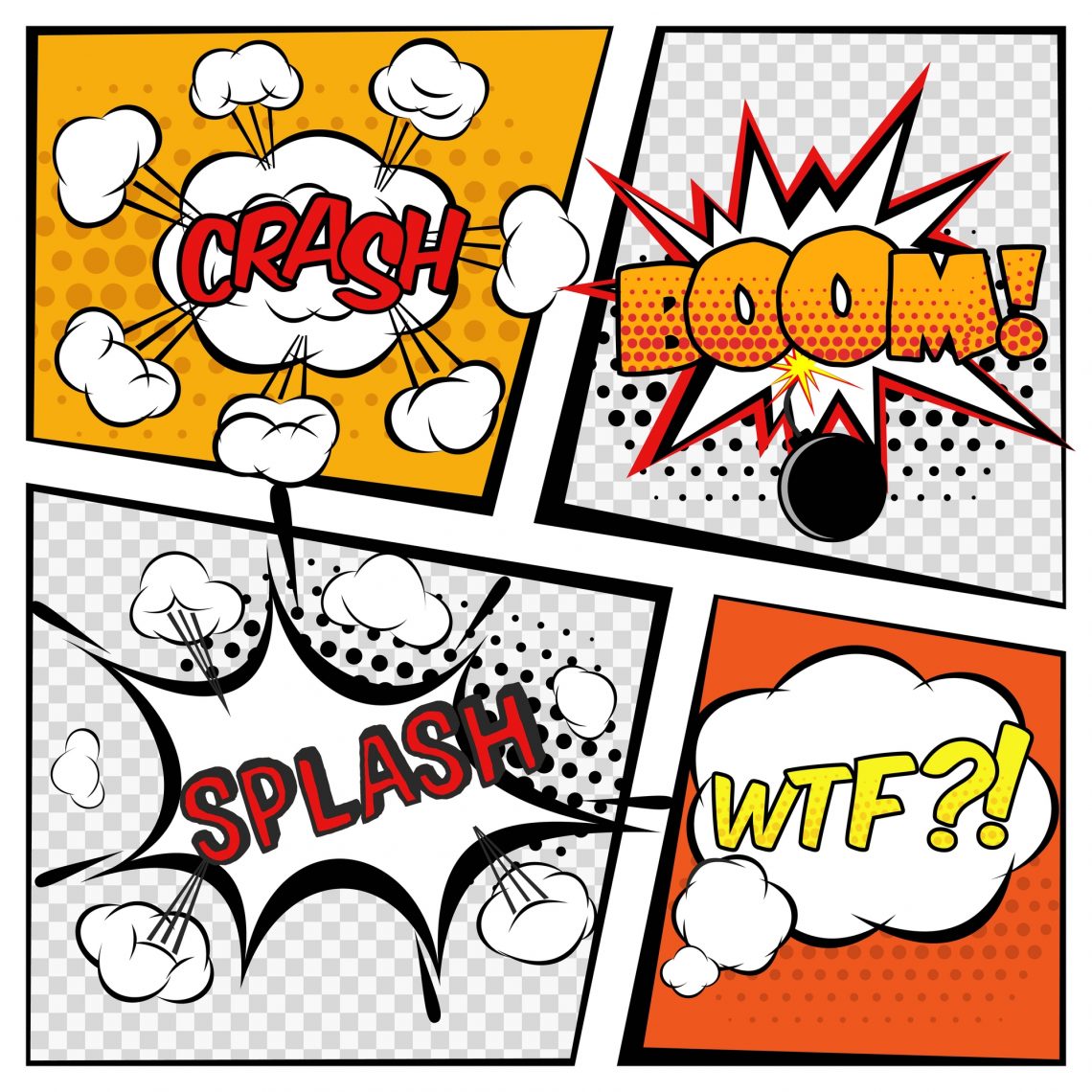Using Comics in Your Brand’s Communication: Explainer for Creatives
For a long time, comics have been unfairly regarded as childish and unserious. Only multi-billion movie adaptations gave them some cultural recognition. But the phenomenon of comics is much broader than Marvel or DC universes and superheroes. It has been an intrinsic part of popular culture for decades, manifesting the most significant political and social changes in its stories and characters.
With vivid storytelling and appealing visuals, comics have a lot of engaging and persuasive potential. As imagery is one of the main techniques for catching people’s attention, generating 2.3 times more engagement than simple text, comics can also be used for marketing purposes. In this article, we explore the comics phenomenon and ways to incorporate comics-based storytelling in your brand communication.
What are comics?
Comics are a form of visual communication that combines a sequence of images and text to convey ideas or meanings. Unlike illustrations or cartoons, they consist of separate frames that express a particular moment, look, or atmosphere. At the same time, these images are meant to evoke an emotion to keep readers engaged. That’s why comic creators use dynamic sequences and unexpected colors or compositions in creating story frames.
Comics can follow one main character in different scenarios and their evolution through time, such as Batman or Iron Man. Or it can tell one general storyline about a cohesive set of events, such as Persepolis by Marjane Satrapi or Maus by Art Spiegelman, which was the first-ever comic to win a Pulitzer Prize.
Although the classical notion of comics is closely connected with print, many of them are published online either as series, as separate graphic novels, or as short stories. There is also a variety of genres and visual styles that can resonate with different audiences.
Main elements of comics
Comics consist of several core elements that constitute a visual story. Without one of them, a graphic is no longer a comic, but a cartoon or illustration. What are those integral parts?
1. Panel
A panel is a space surrounded by border lines that contains a particular scene. It can have different shapes, but is most commonly represented as a rectangle or square. Usually, one comic page has more than one panel with several illustrations and “bubbles” that move the story forward.
2. Caption
A caption is a separate element that gives the reader general information on what is happening within the scene or what characters are involved. This context is needed to set a stage for further events and is usually provided by the narrator or the main character.
3. Speech and thought bubbles
A speech bubble shows the reader what a character is saying out loud, while a thought bubble is there to indicate what the character is thinking. Both bubbles always appear within panels and have a “tail” to point out which character they belong to.

Why to integrate comics in your marketing
For a marketing campaign to be successful, it’s crucial to engage with the audience by showcasing your brand through different means. Whether you are launching a social media, email, or blog campaign, using only texts is not an option. Visuals are integral to any communication, and everyone knows and uses them. Today, you need to develop ideas that will make your brand stand out from competitors. Comics may be one of the possible ways to make your campaign more compelling, giving you an edge over other brands.
Integrating comics in your marketing communication can help you break down barriers with your audience, especially when discussing complicated or controversial topics that need to be more approachable. People often associate themselves with the main characters and emphasize them, which makes comics a perfect medium to tell a convincing story or produce the right psychological impact on an audience. Of course, there are also other ways to do the same, such as animation, but in comparison, comics are less expensive and easier to produce.
Yet, there are some things you should take into account before incorporating comics in your marketing communication. Before deciding whether it’s the right form of storytelling for your content strategy, consider several questions:
- Will it help my message be more understandable?
- Will it resonate with my audience?
- What style of comics will be most suitable for my brand communication?
How to use comics in your communications
Several marketing activities can benefit from integrating comic book storytelling.
Here are some ideas:
1. Social media
A lot of social media communication is often either too dull or too annoying when trying to sell to clients. Simple comics showcasing your product can break through the wall of similar images in feeds, increasing your chances of generating organic leads.
You can develop a character that will showcase your brand’s products on social media, making your communication less aggressive and lightening the mood for your clients; all of this makes them more likely to purchase your offer.
2. Email communication
It’s hard to develop an original idea for an email campaign, which is why comics can be a way to add something new to your email communication. A compelling character and story behind your offer can create a positive image for your brand and make it easier to recall.
You can develop a story where your product is useful and convincing in solving a particular problem compared to other options. Your audience will turn to your brand as a solution in similar situations.
3. Product descriptions and manuals
Usually, people don’t pay a lot of attention to long product descriptions. That’s why comics are one of the best ways of explaining long and tedious instructions in an understandable and friendly manner. Playful stories and visual metaphors can make almost any piece of information more approachable.
You can create simple comics to explain the technicalities of your product or its use. This can help your clients get along with a product and have a better experience using it.
Comics in popular Culture
Find out more about the comics in popular culture and Art Nouveau style in a video on our YouTube channel Creativity: Inside & Out.
Conclusion
It can be hard for a brand to develop persuasive storytelling and visuals for a marketing campaign, especially when it comes to standing out from other brands. Integrating comics into your company’s communication may be one of the options to excel before your competitors, attract more customer attention, and create a positive association around your brand. You don’t need to turn your communication upside down to integrate comics into it. Instead, test this option and see if it works for you.
Here are some other articles you might be interested in:
7 Unusual Ways to Use Emojis in Brand Communication
Your Guide Integrating Audio Into Brand Communication [Infographic]
Analyzing 5 Brand Instagram Strategies




![Your Guide Integrating Audio Into Brand Communication [Infographic]](https://depositphotos-blog.s3.eu-west-1.amazonaws.com/uploads/2020/11/A-Guide-Integrating-Audio-Into-Brand-Communication-Infographic.png)



